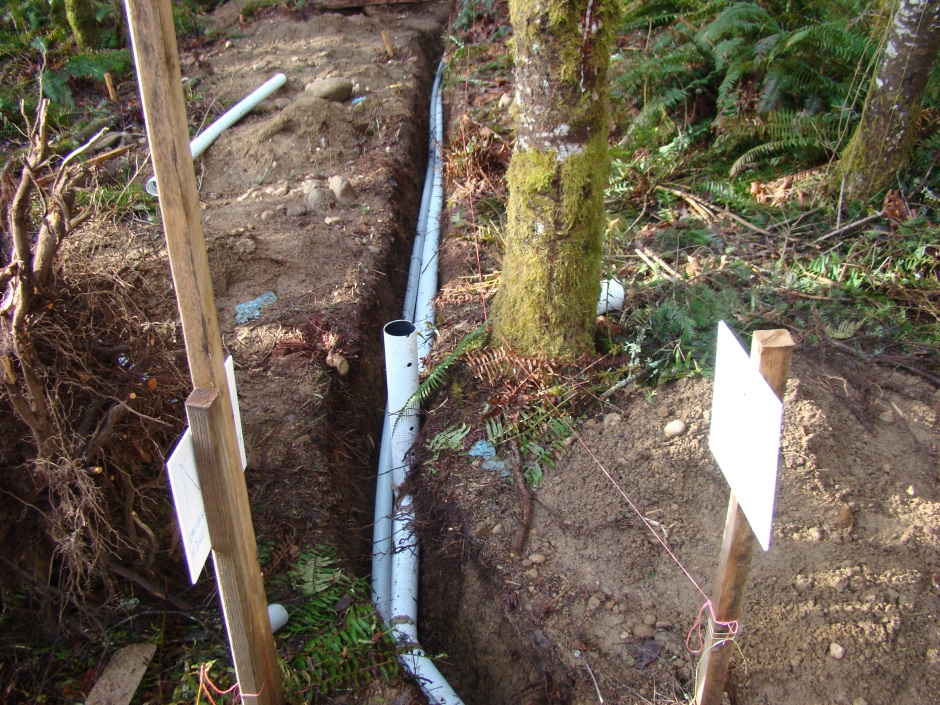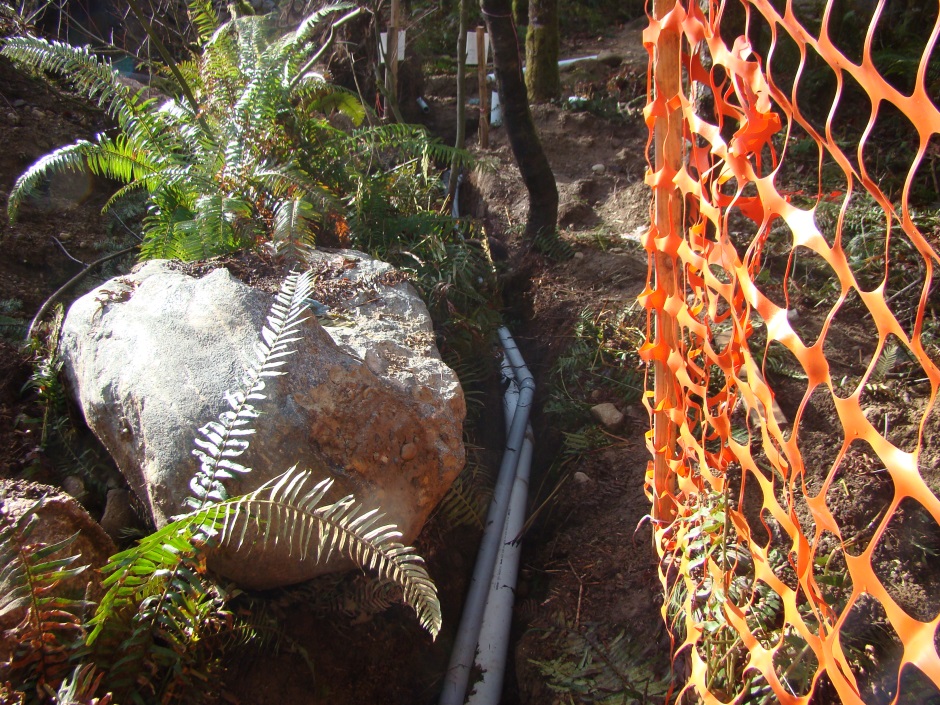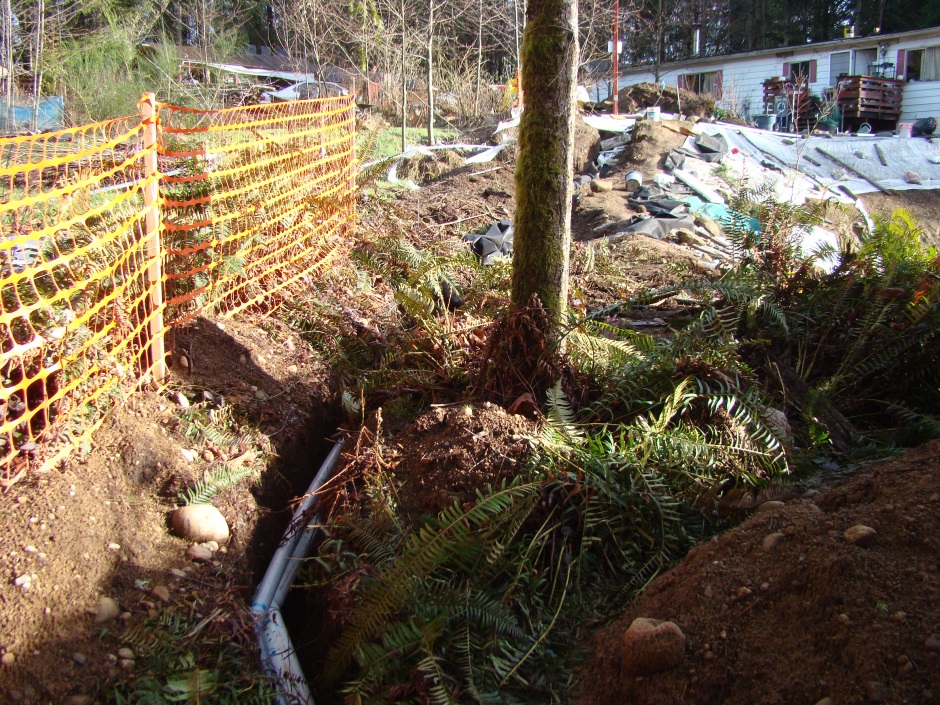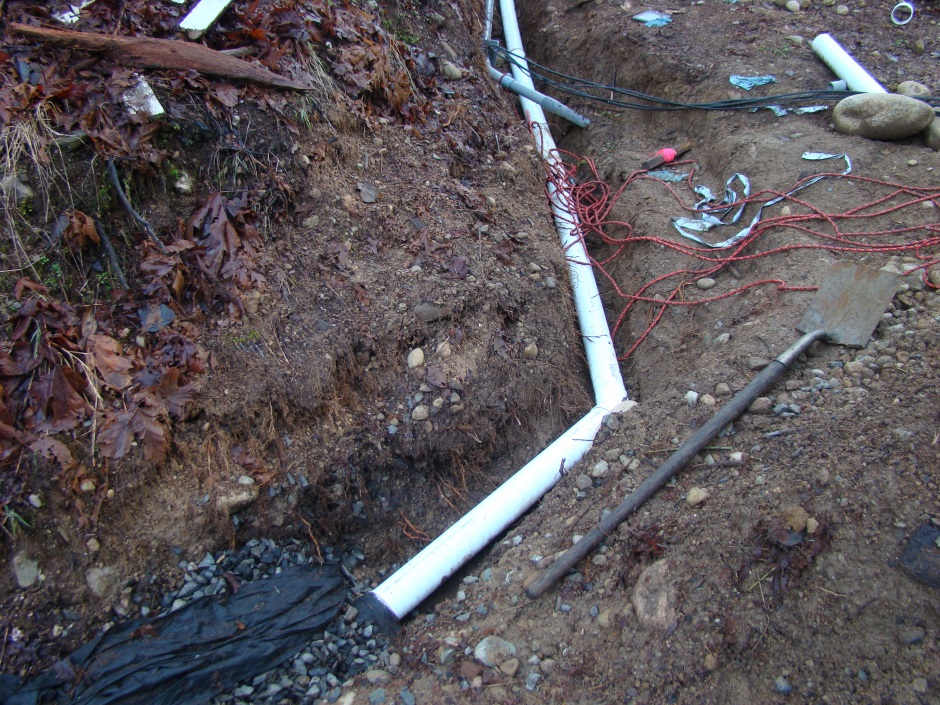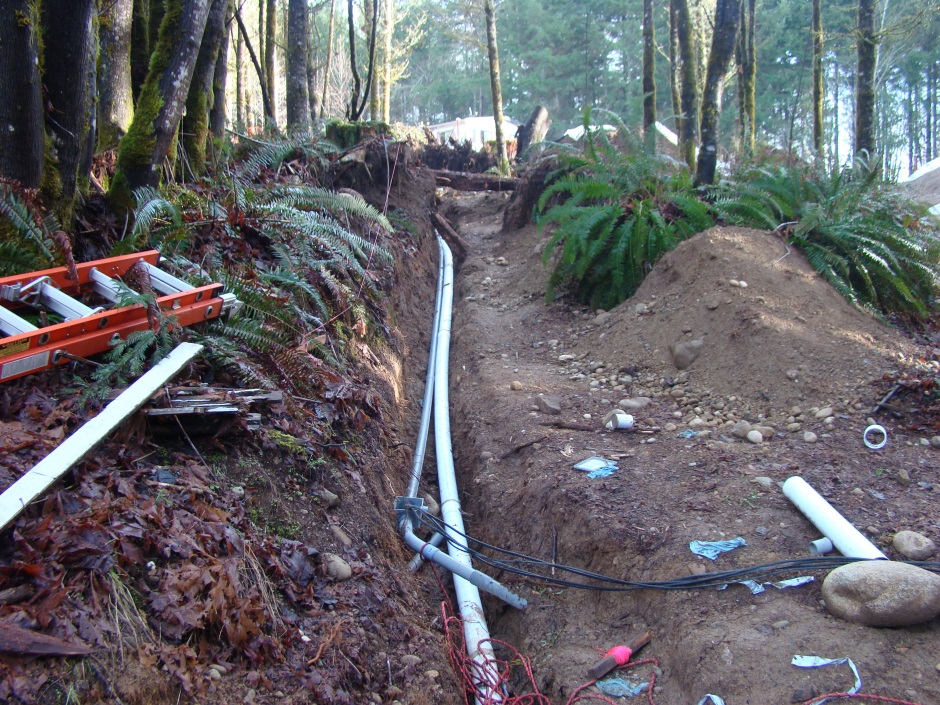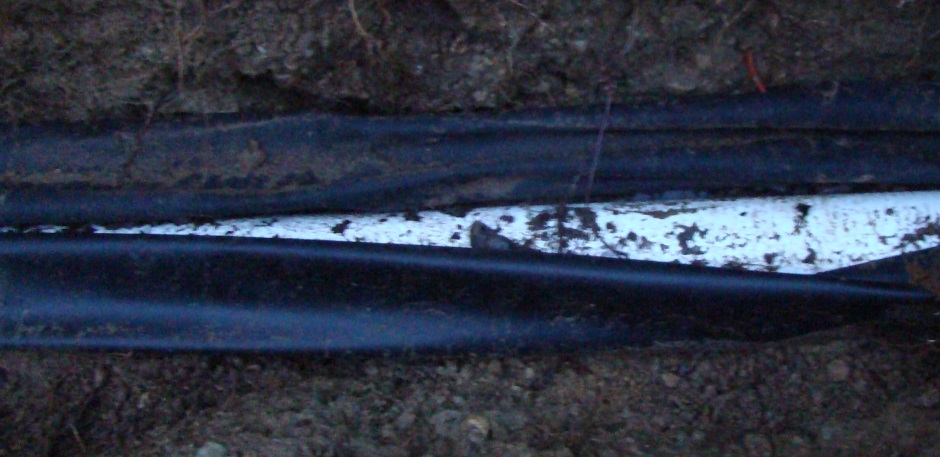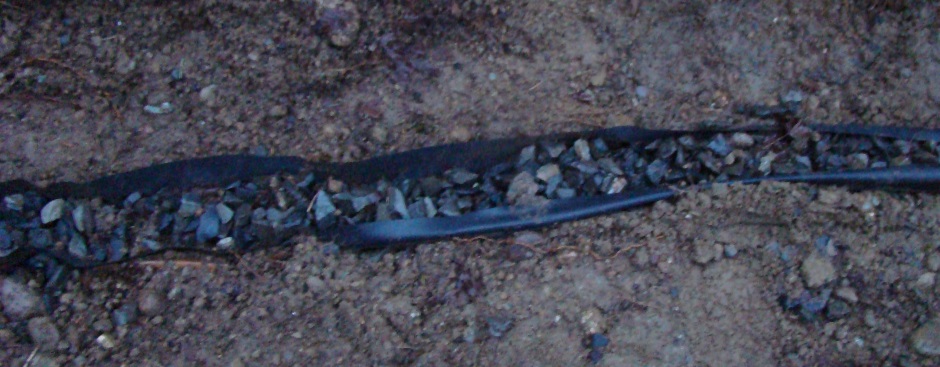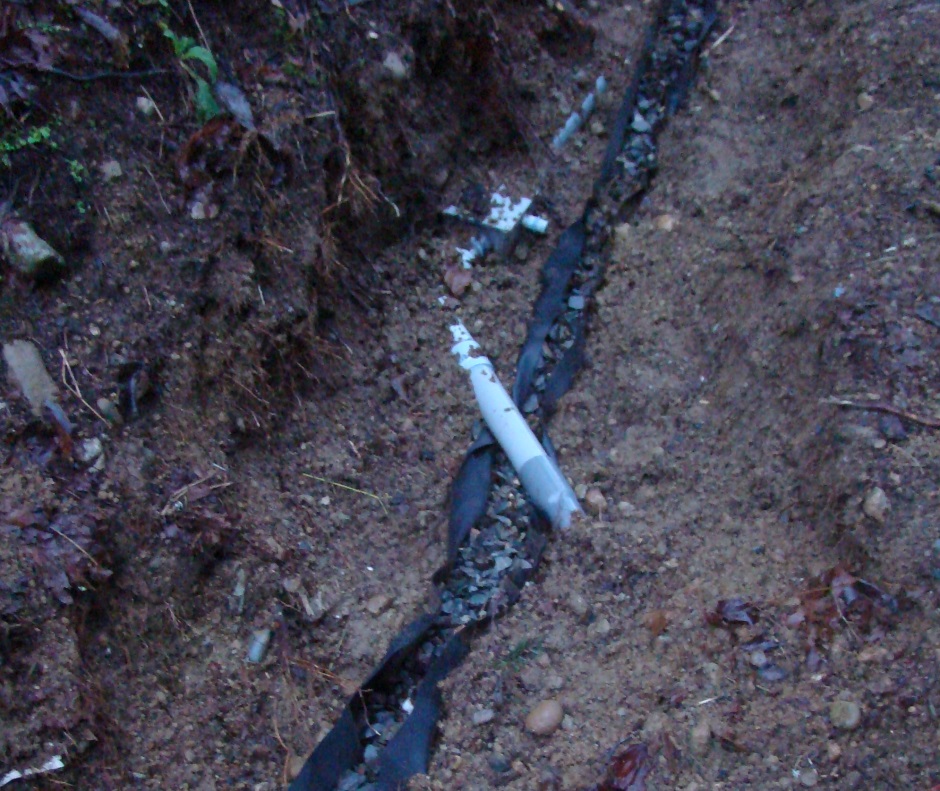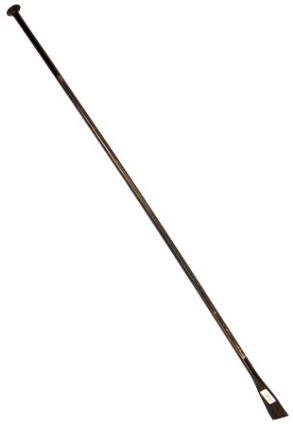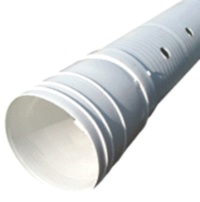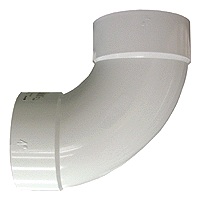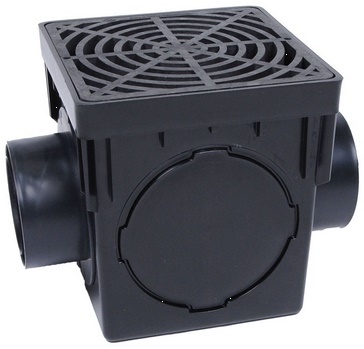Home Site Map - Techniques - Plot Infrastructure -
Drainage - Ditches
![]() In addition to what the formal plan requires you will probably also
want other drainage ditches.
In addition to what the formal plan requires you will probably also
want other drainage ditches.
An essential part of overall house design
Water causes damage
Having a good drainage design and implementation on your plot is important, particularly if you live in a wet area such as Seattle. Not only do you not want to be walking through mud all the time, but water in the wrong places can do lots of damage. Good drainage ditches in the surrounding land are necessary to prevent water getting into your basement.
Drainage Plan
As part of the process of getting a building permit, many jurisdictions require that a drainage plan be submitted. They may well provide a manual that describes what's needed in the drainage plan. In my area it is a 1000 page manual, so don't make the mistake of thinking you can just submit an informal plan.
Drainage ditch design
The ditch should be about 16" deep and about 9" wide. The trench is lined with landscape fabric and then put about 2" of drain rock (or 1-1/4" clean crushed rock) on top of the fabric. Then is laid the 4" perforated drain pipe with the holes facing downwards. You need to make sure that the pipe sections will not come apart so you should use glue as needed. On top of the pipe and around it should be more drain rock (or 1-1/4" clean crushed rock). This should come up to about 2" from grade, ie 2" from the top of the trench. Next goes more landscape fabric to complete a full surrounding of all the drain rock. Above the landscape fabric, the last 2" should be more drain rock (or 1-1/4" clean crushed rock).
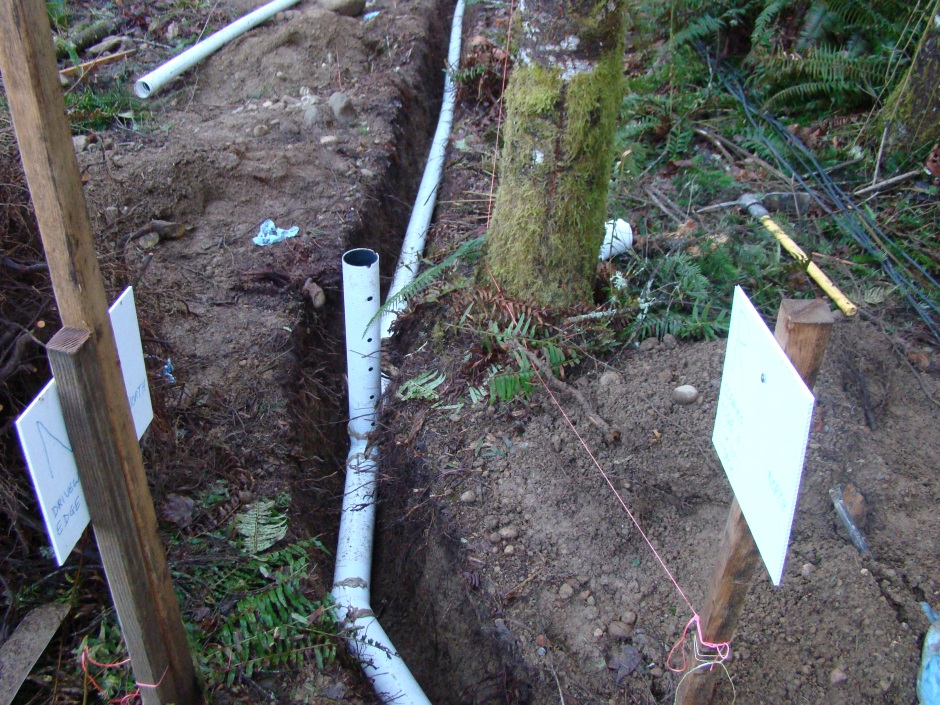
You can fit the landscape fabric after you have glued the sections of pipe. It is good to provide periodic cleanouts consisting of a T piece and a section of vertical pipe.
Where to put them
As discussed here, you need to have a detailed plot map. This will show the position of the house. You will also know the slope of your land and of course you know water flows down hill. You should aim to shield your house all along the up hill side with a drainage ditch. Any water flowing down your land will be caught by the drainage ditch and diverted away to either side of the house.
You should put the ditch a decent distance from the house. Something like 20 feet away is about right. Note that you will also have a drainage system around the house footings, but the drainage ditch we're talking about here is your first line of defense. Where possible you want to stop the bulk of the water getting anywhere near your house site.
Note that a drainage ditch cannot magically make water flow up hill - all it can do is modify the path slightly so it diverts around your house rather than through your house.
Other Ditches
Many other types of ditches are required...
Water pipes
Sewage
pipes
Electrical (in conduit)
Data eg Cat-6 Ethernet (in conduit)
It is important to not share the same ditch for a water pipe and sewage pipe (just in case the sewage pipe leaks). If the two need to cross then you need a sealed outer collar pipe round the sewage pipe as a safeguard and the water pipe must be above and well spaced.
Electrical conduit needs to be 18" deep.
Implementation
Digging the trenches
You could dig the trenches by hand with a shovel, but it's not recommended. A much better bet is to hire an digger such as a tracked excavator or a backhoe.
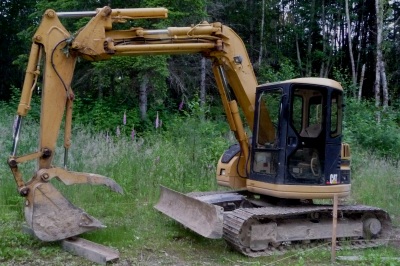
Something like this can dig ditches at a fantastic rate. It will probably cost you $100 per hour to hire the digger and its operator, but it can easily dig 100 feet of deep trench in that time.
The trenches need to slope at a minimum of a quarter inch per foot so that the water will flow properly.
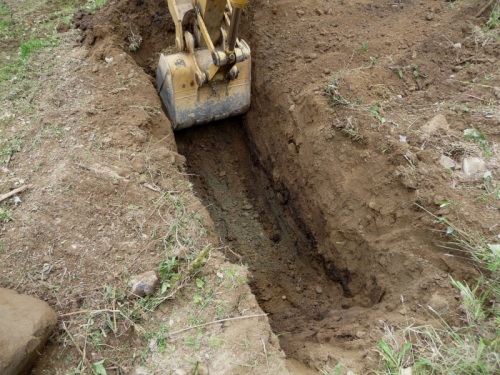
Avoid accidentally digging through utilities
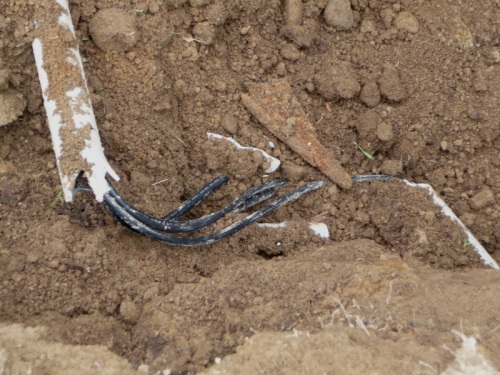
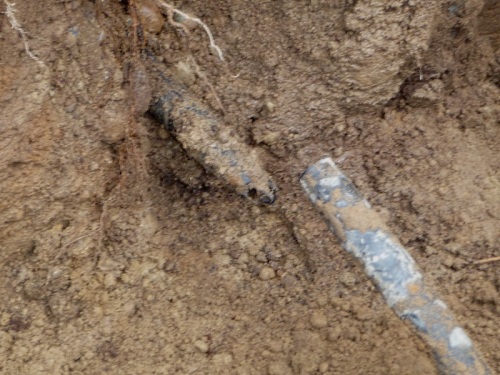
For manual digging of trenches (specially in rocky ground) a very useful tool is a digging bar .
Perforated drain pipe
You need to use the white pipe that comes in 10 foot lengths. This is far better than using the flexible black pipe because the black pipe has issues with proper flow due to the crinkles. In some areas the building inspector will not allow the use of the black flexible pipe.
The 10 foot straight sections have a connector molded on at one end.
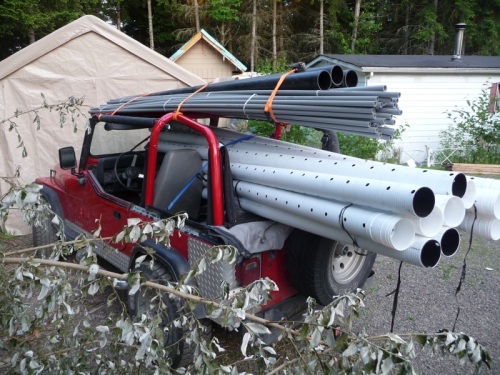
More expensive is 4" PVC pipe, but it is overkill for most drainage ditches. PVC is best as you can use PVC glue. The regular drainage pipe needs PL-Premium glue.
Pipe bends and joints
When you need bends then use PVC corners, eg 90, 45, or 22.5 degree.
They don't overlap the joint as much as the mounded on connectors on the end on the end of the 10 foot straight sections, so it's best to glue them. The best glue to use is PL Premium construction adhesive .

Even when joining the 10 foot straight sections of perforated pipe, it's a good idea to squirt a bit of PL Premium construction adhesive in there to stop them coming apart. It's not essential as the joint overlaps are pretty big, but it doesn't hurt to overkill things. It also makes sure the holes stay at the bottom.
Drain rock
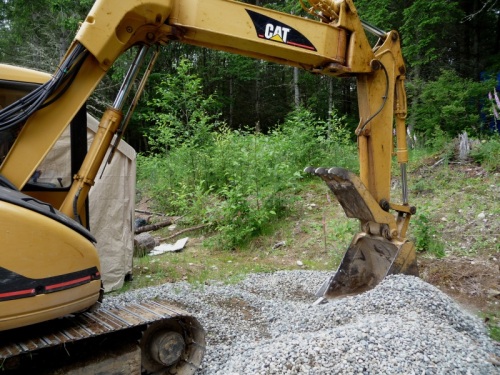
If the trench is too wide then you can use a wooden former to fill the center with drain rock with soil used on either side...
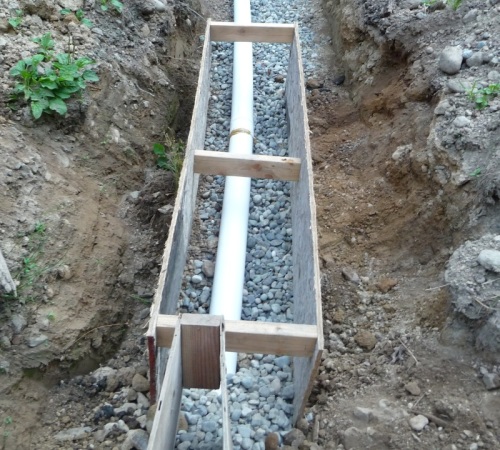
Finished ditch where all you can see at the top is a 9 inch wide line of stones...
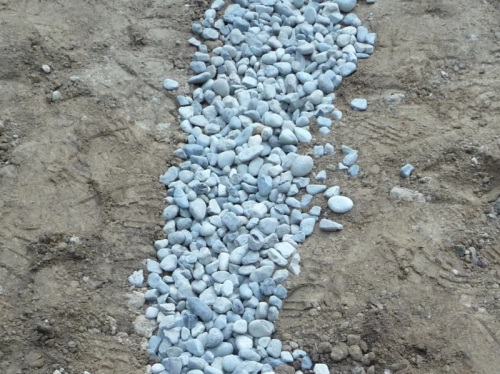
Assorted Photos
